
Review on Onforu 2 Pack LED Flood Lights Outdoor 500W Equiv., 4500Lm Super Bright Security Light, 6500K Daylight White, 50W Outdoor Floodlight, IP66 Waterproof Outside Floodlights For Garage Yard Garden Patio by Mark Albright

Chinese LED chips - Still good after a month of intermittent use
Next to safety, single most important criterium to me is useful time of life. Typically, and also for this product 50,000hours is claimed, which would translate to >10 years with 12h/day of use. Forget about this number which is achieved under lab conditions. The other important criteria being (electrical) safety. Regarding the latter, this product, like many other, doesn’t have a for the US valid testing label from a NRTL (national recogn. test. Lab.) such as UL, ETL, CSA, etc., but after inspection I would consider it safe (having EE background). But since is a (metal) class 1 fixture, please connect the safety ground wire (green-yellow)!Some detail tech background on design.After reading a good amount of reviews, one could see two potential problems regarding (1) Premature failure thus life time and (2) Moisture ingress, also resulting in (1).Can only speculate on possible failure mode, but often Chinese LEDs are operated in overdrive, means operating LEDs at a higher current to achieve higher brightness. But this also increases LEDs junction temperature which, sometime dramatically, reduces lifetime. Junction temperature also depends on the thermal design, means how effective is heat conducted away (path) from the junctions to the outside (rear). At the outside heat dissipates by convection, thus heat exchange between housing and (moving) air. Anyway, ‘still’ air and high ambient temperature can easily result in overheating. Please note that on their label it specifies 1m (=3ft) distance from walls, which is kind of a joke to me.In that regard there are substantial differences between LED chips and brands. Better once such as CREE (US) or Nichia (Japan), OSRAM (Germany) come with higher cost.Some quick current measurement show 385mA at 122V (receptacle), thus 47Watt power in. At 65 LED chips -> 0.7W/chip. Claim 5,500lm -> 120lm/WThat all said, I purchased 50W because I betting 😊 on lower junction temperatures compared to e.g. their 100W version. Not necessarily true btw. Most critical eventually is heat dissipation at outside (convection). Surface temperatures when at equilibrium (indoors) show at rear 130F and front 112F. Estimate show heat dissipation is 20% at front and 80% at rear (much larger surface area due to heat sink. Not a bad design. Also ca. 70% get converted into useful light. Anyway, more LEDs and more power at same outside dimensions would result in higher surface temperatures and consequently higher junction temperatures. That’s my main reason to pick the lowest wattage.In total I installed 4 of the 6 I purchased, 3 at the back of the business, the other one inside a walk-in cooler. The 2 others I keep as spares for ‘emergencies’. Light output is more than sufficient for both applications.I like their overall design and used materials (w/ exception of LEDs, no info) at that low price. Design seem IP66 (equivalent to Nema 4x) worthy to me. Thus I gave it a try; in operation for about a month now. However, if useful life turns out short it would take too much of my time to replace these over and over again. That said, if it turns out that way I will replace with likely higher price LED lights, if I find good once. I btw installed light and cable such that no water can run by gravity along the cable entering the internals in case of cable gland failure. This downward loop in cable.Update of this review will likely closely coincide with LED failure(s) 😅
- 500W equivalent for powerful lighting
- May be too heavy to transport or move around
New products
Comments (0)
Top products in 💡 Job Site Lighting
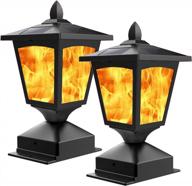
Illuminate Your Outdoor Space With Flickering Flame Solar Post Flame Light And Firefly String Lights – Waterproof, 4X4, 5X5, 6X6 Options – Pack Of 2

44 Review
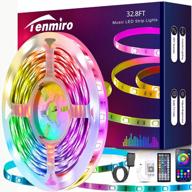
Tenmiro 32.8Ft RGB LED Smart Music Sync Color Changing Strip Lights With Remote For Bedroom, Kitchen, Home, TV, Parties And Festivals

39 Review

Onforu 55W LED Dusk To Dawn Security Lights: Powerful Floodlights For Outdoor Safety And Convenience

42 Review
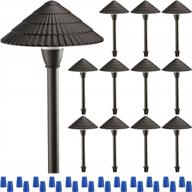
Illuminate Your Outdoor Space With 12-Pack Of LEONLITE Low Voltage Landscape Lights - Waterproof And Energy-Efficient 3000K Warm White LED Lights!

47 Review
Another interesting products

Protective And Stylish: XCEL 4Ft W X 5Ft H Black Steel Fence Gate With Anti-Rust Technology And Sharp End Pickets For Effortless Installation And Durable Outdoor Use

34 Review
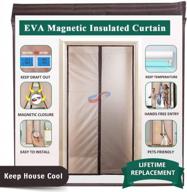
IKSTAR EVA Thermal Plastic Door Cover 38" X 82": Insulated Magnetic Curtain Keeps Cool Summer, Warm Winter For AC Room, Kitchen & Stair - Brown

40 Review

Ensure Safe Steps With Outdoor Non-Slip Stair Treads - 10 Pack Of 6"X40" Black Anti-Slip Strips

42 Review
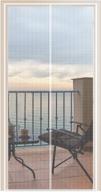
Easy Install White Magnetic Door Screen For Doorways And Sliding Doors - Fits 34X82 Fiberglass Mesh Screen With Heavy Duty Magnets - Screen Size 36X83

36 Review

